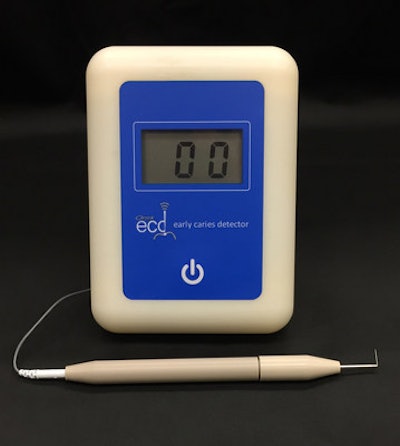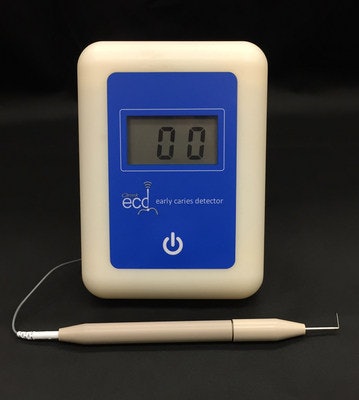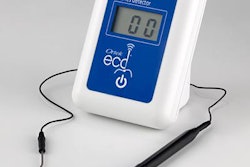
Ortek Therapeutics has received 510(k) clearance from the U.S. Food and Drug Administration for its Ortek ECD, an electronic cavity detection device.
 The Ortek ECD device. Image courtesy of Ortek Therapeutics.
The Ortek ECD device. Image courtesy of Ortek Therapeutics.The battery-powered device uses electrical conductance to diagnose and monitor caries in the biting surfaces of molars and premolars. Enamel is electrically nonconductive unless there is a fracture or demineralization. The ECD is able to complete its electrical circuit when dentinal fluid from a tooth filters through the breached enamel due to mineral loss, according to the company. The device features a handpiece with a probe tip, and it can measure the amount of dentinal fluid in the pits and fissures of teeth and will display the number on the ECD unit. The more fluid that is detected, the greater the severity or extent of the carious or precarious lesion, according to the company.
The device was found to be 96% accurate in detecting microscopic precarious enamel lesions on molar and premolar surfaces in two clinical trials, without the radiation exposure from radiographs, the company noted.
The ECD was developed at the Stony Brook University Division of Translational Oral Biology and exclusively licensed to Ortek from the Research Foundation of State University of New York. It will be commercially available next year, according to Ortek.
The company is also the developer of BasicBites chews.



















